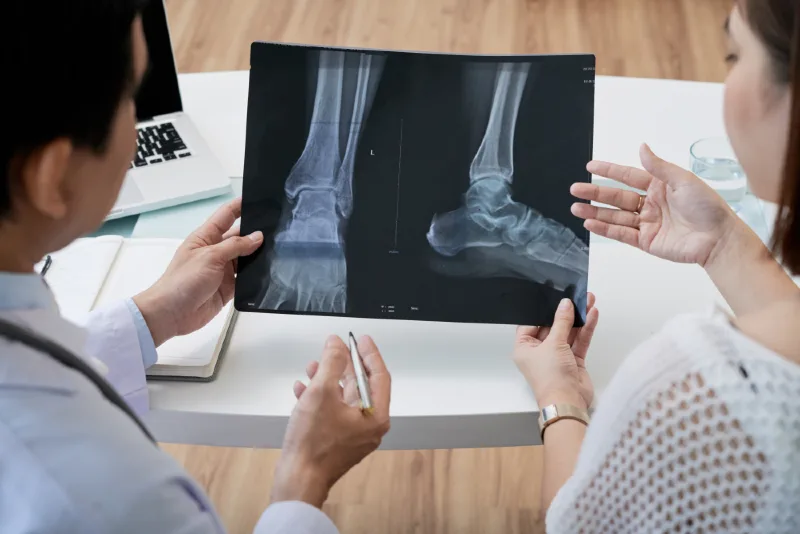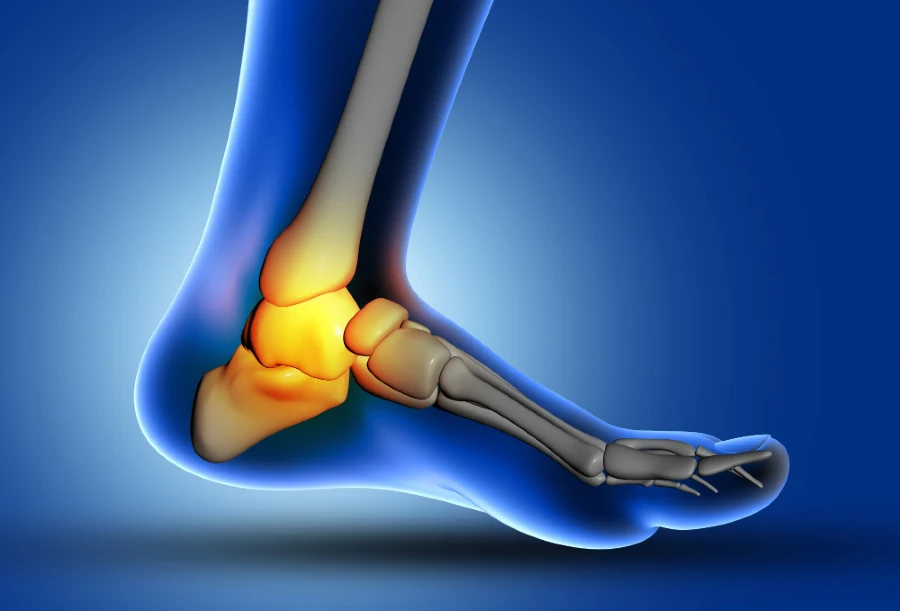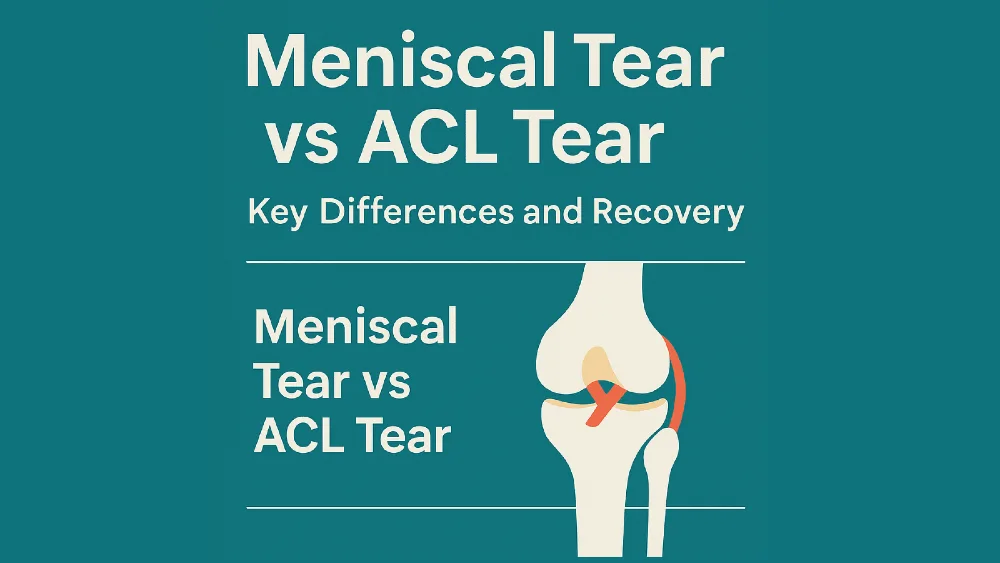Heel pain is one of the most common foot complaints, affecting people of all ages and lifestyles. Whether you’re a runner, spend long hours standing, carry excess weight, or simply walk a lot — your heels take a beating. In fact, with every kilometer we walk, our feet absorb the force of nearly 50 tons. No surprise, then, that heel discomfort can become a serious obstacle in everyday life.
Most cases of heel pain are caused by overuse, strain, or inflammation, and they’re rarely serious. However, when the pain doesn’t go away, worsens over time, or comes with other unexplained symptoms, it’s normal to wonder: Is heel pain a sign of cancer?
In this article, we’ll explore the most common causes of heel pain, explain when it might signal something more serious, and help you understand when to see a doctor. The goal is to provide facts — not fear — so you can feel more confident about your health and recovery.
What Causes Heel Pain Most Often?
Heel pain is one of the most common complaints in orthopedic and sports medicine. In the vast majority of cases, it’s caused by non-cancerous, mechanical issues — usually related to overuse, poor footwear, or strain on the foot structures.
Here are the most common causes of heel pain:
- Plantar fasciitis – Inflammation of the thick band of tissue (plantar fascia) that runs along the bottom of the foot. This is by far the most frequent cause of heel pain, especially after periods of rest (e.g., getting out of bed in the morning).
- Heel spur (calcaneal spur) – A bony growth on the underside of the heel bone. Often painless by itself, but can be associated with plantar fasciitis.
- Achilles tendinitis – Inflammation of the Achilles tendon at the back of the heel, often due to repetitive strain from running or sports.
- Haglund’s deformity (Haglund heel) – A bony enlargement at the back of the heel, near where the Achilles tendon attaches. It often causes irritation, redness, and pain, especially when wearing stiff shoes like high heels or tight sneakers. This condition can lead to inflammation of the surrounding soft tissues, including the Achilles tendon and bursa.
- Stress fracture – Small cracks in the heel bone, typically from overtraining, especially in runners or soldiers.
- Fat pad atrophy – Thinning of the protective fat cushion under the heel, common in older adults.
- Tarsal tunnel syndrome – Compression of the tibial nerve near the ankle, which may cause pain radiating into the heel.
These conditions are typically benign and respond well to conservative treatments such as rest, stretching, physical therapy, orthotics, or anti-inflammatory medications.
When Should Heel Pain Raise Concern?
Most cases of heel pain are harmless and related to overuse or biomechanics. However, in rare instances, heel pain may prompt the question: “Is Heel Pain a Sign of Cancer?” While uncommon, this possibility arises when heel pain presents alongside red-flag symptoms.
You should see a doctor if your heel pain is:
- Persistent and worsening over time, despite rest and conservative treatment (this can happen even with common conditions like plantar fasciitis)
- Not related to activity or weight-bearing (e.g., hurts even when lying down)
- Associated with swelling, redness, or a palpable mass in or around the heel
- Accompanied by unexplained weight loss, night sweats, or fatigue
- Linked with a history of cancer elsewhere in the body
- Skin changes or non-healing wounds on the heel — Any persistent sore, ulcer, or darkened area on the heel that does not heal over time may be a sign of a skin cancer such as melanoma or squamous cell carcinoma.
In these cases, your doctor may recommend advanced imaging — such as X-ray, MRI, or CT scan — to rule out bone tumors or other systemic conditions.
Can Cancer Cause Heel Pain?
So, is heel pain a sign of cancer? The answer: rarely, but possibly. Certain types of tumors can affect the bones or soft tissues in the heel, causing symptoms that mimic more common orthopedic issues.
These tumors may originate in the heel itself (primary tumors) or spread from other parts of the body (metastatic cancer). Unlike typical overuse injuries, cancer-related heel pain is often persistent, deep, and unrelated to activity or pressure on the foot.
Types of cancers that can potentially cause heel pain include:
- Ewing sarcoma – A rare, aggressive bone tumor usually affecting children and adolescents. It may develop in the calcaneus (heel bone) and cause pain, swelling, or a lump.
- Osteosarcoma – A malignant bone tumor that can occasionally affect the heel and lead to localized pain and structural changes.
- Chondrosarcoma – A slow-growing cancer that arises from cartilage-producing cells. While more common in larger bones, it can rarely involve the foot.
- Primary osseous lymphoma – A type of lymphoma that originates in the bone, including the calcaneus, and may cause deep, aching heel pain with or without swelling.
- Metastatic cancers – Tumors from organs such as the breast, lung, prostate, or kidney can occasionally spread to the bones of the foot, including the heel, although this is uncommon.
- Melanoma or squamous cell carcinoma – Skin cancers that may appear on the heel, especially in sun-exposed or pressure-bearing areas. They often present as non-healing wounds, ulcers, or pigmented skin changes that may or may not be painful.
Although these conditions are rare, they should be considered when heel pain is persistent, occurs at rest or at night, or is accompanied by other concerning signs like weight loss, night sweats, or fatigue.
How Do Doctors Rule Out Cancer in Heel Pain?
To answer the question “Is Heel Pain a Sign of Cancer” definitively, doctors will assess both clinical and imaging findings. The diagnostic process typically includes:
Medical History & Physical Exam
Your doctor will ask detailed questions about the onset, duration, and nature of your pain. They’ll look for red flags like night pain, unexplained weight loss, swelling, or visible skin changes. A physical exam helps identify masses, tenderness, or abnormalities in the structure of the heel.
Imaging tests
- X-ray is often the first imaging step. While it may not detect all tumors, it can reveal bone destruction, unusual growths, or calcifications.
- MRI (Magnetic Resonance Imaging) provides high-detail images of both bone and soft tissue, making it the most sensitive tool for detecting tumors and differentiating them from inflammation or degeneration.
- CT scans or bone scans may also be used to evaluate bone involvement or detect metastatic disease.

Blood Tests
Although not diagnostic for cancer, certain blood markers (like inflammatory markers or tumor markers) may raise suspicion and guide further testing.
Biopsy
If imaging reveals a suspicious mass, a biopsy is performed to determine whether the tissue is benign or malignant. This involves taking a small sample from the affected area, either by needle or through a small surgical incision, and analyzing it under a microscope.
Timely diagnosis is essential. While cancer is a rare cause of heel pain, these steps ensure that serious conditions are not overlooked, especially when symptoms are persistent, unexplained, or progressively worsening.
What You Can Do if You’re Worried
If you’re experiencing heel pain that doesn’t improve, or you’ve noticed unusual symptoms — like swelling, persistent pain at rest, or changes in the skin — it’s completely understandable to feel concerned. While cancer is a rare cause of heel pain, early evaluation is key to peace of mind and proper care.
Here are steps you can take:
- Don’t ignore ongoing symptoms. If pain persists for more than a few weeks despite rest, stretching, or over-the-counter treatments, book an appointment with your doctor.
- Be specific during your visit. Share details about how long the pain has lasted, what makes it worse or better, and whether you’ve noticed changes like warmth, swelling, or weight loss.
- Ask for further evaluation if needed. If conservative treatment isn’t working, or you’re worried about something more serious, request imaging like an X-ray or MRI for a clearer picture.
- Avoid jumping to conclusions. Most cases of heel pain are not cancer. Conditions like plantar fasciitis, heel spurs, or Haglund’s deformity are far more common — and treatable.
- Prioritize regular follow-up. If your symptoms change or new ones develop, keep your healthcare provider informed. Reassessment helps catch rare conditions early if they’re present.
Taking action doesn’t mean expecting the worst — it simply means taking control of your health. A thorough exam and the right tests can provide clarity and reassurance.
Conclusion: Heel Pain Is Common — Cancer Is Not
In short, “Is Heel Pain a Sign of Cancer?” is a valid question — but for most people, the answer is no!
Heel pain is one of the most frequent foot complaints, especially in active adults and older individuals. In the vast majority of cases, it’s caused by benign conditions like plantar fasciitis, Achilles tendinopathy, heel spurs, or bursitis — all of which are treatable with rest, therapy, and proper footwear.
While it’s natural to worry when pain doesn’t go away, cancer is a very rare cause of heel pain. Tumors affecting the heel, whether primary bone cancers like chondrosarcoma or metastatic lesions, are uncommon. They usually present with additional red flags, such as swelling, night pain, weight loss, or visible skin changes.
If your pain is persistent, worsening, or accompanied by unusual symptoms, don’t ignore it — but don’t panic either. Seeking medical advice can help rule out serious conditions and get you on the right track toward relief.
Most importantly, remember: not all persistent pain is dangerous, but all persistent pain deserves attention.
Yan L, Zong J, Chu J, Wang W, Li M, Wang X, Song M, Wang S. Primary tumours of the calcaneus. Oncol Lett. 2018 Jun;15(6):8901-8914. doi: 10.3892/ol.2018.8487. Epub 2018 Apr 13. PMID: 29928329; PMCID: PMC6004727.
Mascard E, Gaspar N, Brugières L, Glorion C, Pannier S, Gomez-Brouchet A. Malignant tumours of the foot and ankle. EFORT Open Rev. 2017 May 11;2(5):261-271. doi: 10.1302/2058-5241.2.160078. PMID: 28630763; PMCID: PMC5467685.
Fizijatar.hr – Bol u peti: 9 glavnih uzroka i kako ih liječiti













